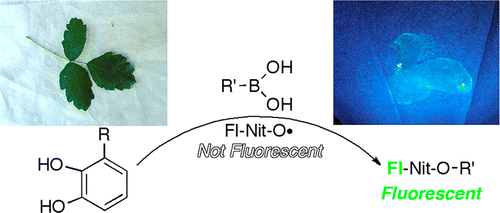Taking the battle against the toxic trio beyond 'Leaves of 3, leave it be'

With more than half of all adults allergic to poison ivy, oak and sumac, scientists are reporting an advance toward an inexpensive spray that could reveal the presence of the rash-causing toxic oil on the skin, clothing, garden tools, and even the family cat or dog. Using the spray, described in ACS' The Journal of Organic Chemistry would enable people to wash off the oil, or avoid further contact, in time to sidestep days of misery.
Rebecca Braslau and colleagues explain that allergic reactions to oils of the toxic trio are more than a nusiance. They claim a huge human and economic toll, accounting for thousands of medical visits, days lost from work and school and sheer misery for the victims. It takes only 0.04th of a drop of the plants' oil to trigger a reaction, and the oil is invisible. The scientists thus sought to begin developing a way to make the oil visible, so that people can do a reality check after venturing into outdoor areas where the toxic plants grow.
They describe development of a spray that, when applied to leaves of poison ivy, oak and sumac, reacts with urushiol, the toxic oil produced by those plants. When exposed to an ordinary fluorescent light, the spray glows if urushiol is present, revealing the location of the oil. "This constitutes the groundwork for the future development of a spray to detect urushiol to avoid contact dermatitis," the scientists say.
More information: "Urushiol Detection Using a Profluorescent Nitroxide" J. Org. Chem., Article ASAP. DOI: 10.1021/jo301135m
Abstract
A method to visually detect minute amounts of urushiol, the toxic catechol from poison oak, poison ivy, and poison sumac, has been developed utilizing the reaction of a profluorescent nitroxide with the B-n-butylcatecholboronate ester formed in situ from urushiol and B-n-butylboronic acid. The resulting N-alkoxyamine is strongly fluorescent upon illumination with a fluorescent lamp, allowing the location of the toxic urushiol contamination to be visualized. This methodology constitutes the groundwork for the future development of a spray to detect urushiol to avoid contact dermatitis, as well as to detect catecholamines for biomedical applications.
Provided by American Chemical Society
















